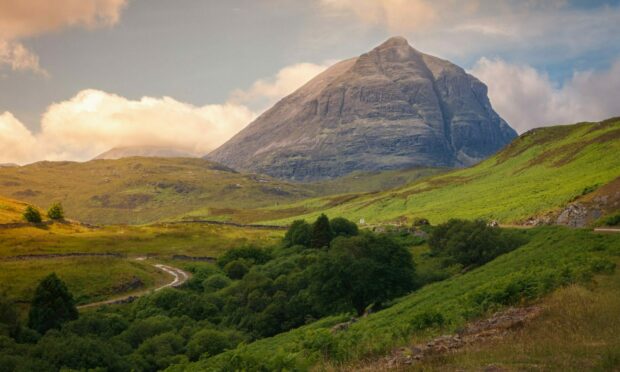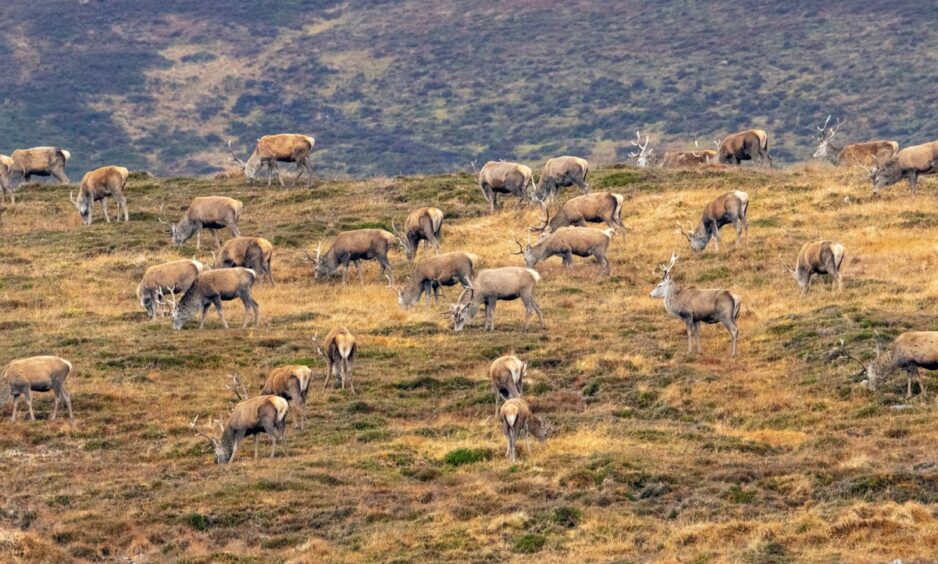Crofters have strongly criticised a conservation body’s plans to carry out a “gratuitous” closed season deer cull on a Highland mountain.
NatureScot has granted a license to the John Muir Trust (JMT) for out of season and night shooting on its land on Quinag until the end of March.
But the dispute over how to deal with the animals has led JMT to withdraw from the West Sutherland Deer Management Group, made up of local landowners.
It applied for the licence to protect woodland on Quinag from grazing deer.
‘Indiscriminate killing’
But one of its neighbours, the Assynt Crofters’ Trust (ACT), says deer fencing would be an effective way to prevent damage “rather than indiscriminate killing which is unlikely to work in any case”.
It adds: “Deer culling without justifiable environmental gain is just gratuitous and ultimately unsustainable.”
ACT says it and other deer group members generally support JMT’s objectives and have planted more than 2,000 hectares of new native woodland in the last 25 years.
“However, ACT disagree with JMT’s means of achieving their goals.
“JMT are completely opposed to fencing, the logical means of preventing deer encroaching on up-and-coming growth.
“Their sole policy is reducing the deer population to a bare minimum.
“Deer travel long distances in search of food. Culling deer in one place simply means that others will move in from elsewhere.
“This gratuitous killing of deer will have a direct, long-lasting and detrimental effect on all of their neighbours.”
ACT says woodland is regenerating despite the deer and there is no evidence of high deer impacts on the wider open hill area.
However, JMT chief executive officer David Balharry says reducing deer density is essential for woodland restoration at Quinag.
“Our objective is to allow recovery of the remnant woodlands on Quinag, which continue to suffer browsing damage from deer.
“After over a decade participating in the Assynt Peninsula Sub Group and the wider West Sutherland Deer Management group, there has been little progress.
“These fragile woodlands at Quinag continue to suffer damage as a result.
Need for different approach
“We feel the time is right for a different approach. We have withdrawn our voluntary membership of the APSG until such time as we can be assured it can work in a way that recognises legitimate management objectives, land-owning rights and responsibilities, and the rights of staff to work with others in a respectful environment.”
He said the trust will continue to share plans and actions on deer management locally and with the ASPG chair.
A NatureScot spokeswoman said high numbers of deer and lack of natural predators mean they can impact on woodland and biodiversity.
“Sustainable deer management is vital to effectively tackle the nature loss and climate change crises.”
“JMT submitted an application to us seeking authorisation to control deer out-of-season and at night on their Quinag land to prevent damage to woodland and other habitats, including those on protected sites.
“We have issued an authorisation on that basis. These authorisations are a legitimate tool for preventing damage and delivering effective deer management.”
The spokeswoman said that, as well as JMT, NatureScot has been discussing the plans with the Assynt Deer Management Group and local stakeholders.
“While we are disappointed that the collaborative approach has broken down in this area, this has no bearing on our authorisation process, which is about NatureScot satisfying itself that damage is occurring, or likely to occur, and that no other reasonable means of control can be adopted to prevent damage.”
You might also be interested in:
- Deer cull planned as rising population puts ‘unprecedented’ pressure on environment
- Deer populations in Scotland could be severely reduced under new cull recommendations
Are you interested in more exclusive and breaking Highland and Islands news from the P&J? If so, why not join our dedicated Facebook page HERE



Conversation